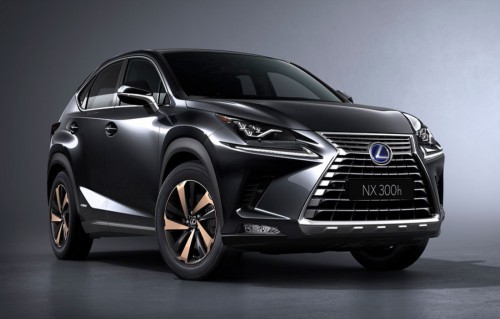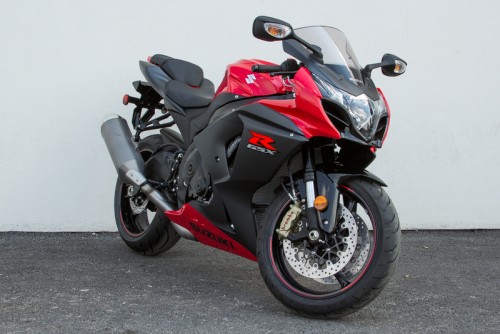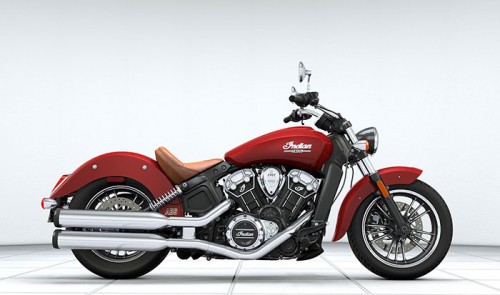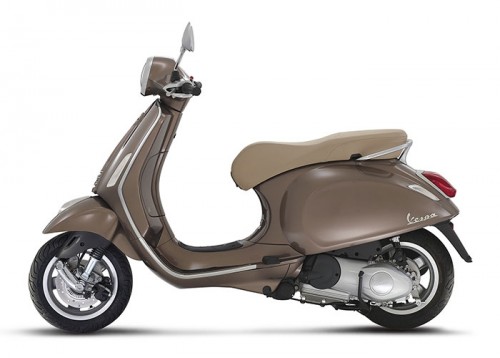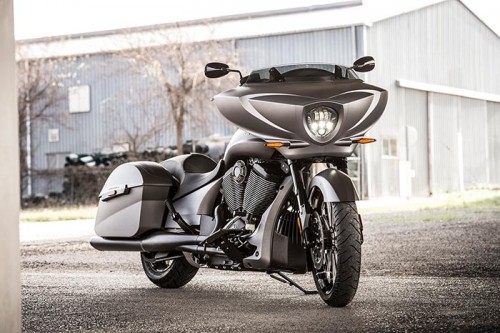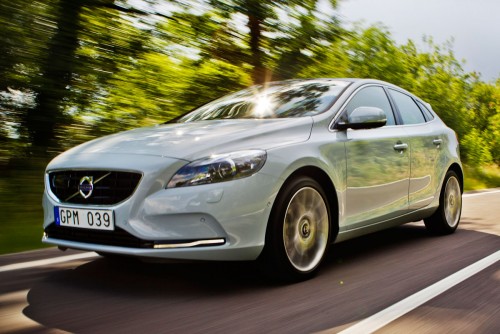About Pontiac
History
Predecessor firm, 1907–1908
The Pontiac Spring and Wagon Works was incorporated in July 1899 by Albert G. North and Harry G. Hamilton. By 1905 they had taken over the manufacturing of the Rapid Truck (from the Rapid Motor Vehicle Co.) that had been introduced two years earlier. In 1907 they decided to produce an automobile.
The first Pontiac automobile, named "The Pontiac" was introduced that fall by the Pontiac Spring & Wagon Works. It was a highwheeler weighing 1,000 pounds (450 kg) and powered by a two-cylinder water-cooled 12 hp (8.9 kW) engine. A prototype was displayed in October 1907 at an exhibition sponsored by the Carriage Dealers' Association in New York City's Grand Central Palace. In December of the same year several of the new Pontiacs were exhibited at the Chicago Automobile Show. Well received by the press, the car featured final drive by double chain and a friction transmission. The wheelbase was 70 inches (1,800 mm), front wheels 38, with 40s in the rear, and solid rubber tires. The first deliveries were probably made in early 1908.
On Aug. 28, 1907, Edward M. Murphy incorporated the Oakland Motor Co. Murphy is said to have chosen the Oakland name for his automobile venture because the company was located in Oakland County, Michigan. Crosstown rival Pontiac Spring & Wagon Works already was making a high-wheel motor wagon under the Pontiac name.
In January 1909, General Motors President William C. Durant purchased a 50% interest in the Oakland Motor Car Company. Later that year GM bought out the other 50% after the unexpected death of Edward M. Murphy at the age of 45.
While technically the first car model named after the city, Pontiac Spring's early use of the Pontiac name is not at all related to the production history of the later make by General Motors.
1946–1954
From 1946 to 1948, all Pontiac models were essentially 1942 models with minor changes. The Hydra-matic automatic transmission was introduced in 1948 and helped Pontiac sales grow even though their cars, Torpedoes and Streamliners, were quickly becoming out of date.
The first all-new Pontiac models appeared in 1949. Newly redesigned, they sported such styling cues as lower body lines and rear fenders that were integrated in the rear-end styling of the car.
Along with new styling came a new model. Continuing the Native American theme of Pontiac, the Chieftain line was introduced to replace the Torpedo. These were built on the GM B-Body platform and featured sportier styling than the more conservative Streamliner. In 1950, the Catalina pillarless hardtop coupe was introduced as a "halo" model, much like the Chevrolet Bel Air of the same year.
1970–1982
Increasing insurance and fuel costs for owners coupled with looming Federal emissions and safety regulations would eventually put an end to the unrestricted, powerful engines of the 1960s. Safety, luxury and economy would become the new watch-words of this decade. Engine performance began declining in 1971 when GM issued a corporate edict mandating that all engines be capable of using lower-octane unleaded gasoline, which led to dramatic drops in compression ratios, along with performance and fuel economy. This, coupled with trying to build cars as plush as GM's more luxurious Buicks and Oldsmobiles, contributed to the start of a slow decline of Pontiac in 1971.
In mid-1971 Pontiac introduced the compact, budget-priced Ventura II (based on the third generation Chevrolet Nova). This same year, Pontiac completely restyled its full-sized cars, moved the Bonneville, and replaced it with a higher luxury model named the Grand Ville, while Safari wagons got a new clamshell tailgate that lowered into the body while the rear window raised into the roof.
1971–1976 model full-size station wagons featured a 'Clamshell' design where the rear power-operated glass slid up into the roof as the tailgate (manually or with power assist), dropped below the load floor. The power tailgate, the first in station wagon history, ultimately supplanted the manual tailgate, which required marked effort to lift from storage.
The 1972 models saw the first wave of emissions reduction and safety equipment and updates. GTO was a now sub-series of the LeMans series. The Tempest, was dropped, after being renamed 'T-37' and 'GT-37' for 1971. The base 1972 mid-sized Pontiac was now simply called LeMans.
James MacDonald left the post of general manager to be replaced by Martin J. Caserio in late 1972. Caserio was the first manager in over a decade to be more focused on marketing and sales than on performance.
1989–1997
Although updating and revamping continued throughout the 1990s, the vast change seen during the 1980s did not. The period between 1989 and 1997 can best be described as one of continuous refinement. Anti-lock brakes, GM's Quad-4 engine, airbags and composite materials all became standard on Pontiacs during this time.
All new models were produced but at more lengthy intervals. The 1990 model year saw the launch of Pontiac's first minivan and light truck, the Trans Sport. The Sunbird was replaced with the (still J-body) Sunfire in 1995.
Most significantly, an all new Firebird bowed in 1993. It was powered by either a 3.4L V6 with 160 hp (120 kW), or in TransAm guise a 275 hp (205 kW) LT-1, a 5.7L (350c.i.) V8, and could be backed by a T-56 six-speed manual (which was similar to the transmission found in contemporary Corvettes and Vipers). This new Firebird easily outperformed its main rival, the Ford Mustang, but did not do as well in the marketplace due to the Mustang's superior image and refinement, particularly in the interior.
1992 saw the introduction of a brand-new Bonneville. This full-size model featured aerodynamic styling, large expanses of curved glass, front-wheel drive, and a V6 as standard equipment. This model proved popular and continued in production into the 21st century.
Engines
Main article: Pontiac V8 engine
Pontiac engineer Clayton Leach designed the stamped steel valvetrain rocker arm, a simplified and reliable alternative to a bearing-equipped rocker. This design was subsequently picked up by nearly every OHV engine manufacturer at one point or another.
Pontiac began work on a V-8 configuration in 1946. This was initially intended to be an L-head engine, and 8 experimental units were built and extensively tested by the end of the 1940s. But testing comparisons to the OHV Oldsmobile V-8 revealed the L-head could not compete performance-wise. So, in addition to building a new Pontiac Engineering building in 1949–1951, the decision to re-direct the V-8 to an OHV design delayed its introduction until the 1955 model year.
In mid-1956, Pontiac introduced a higher-powered version of its V-8. Among other things, this version of the engine was equipped with a high-performance racing camshaft and dual 4-barrel carburetors. This was the first in a series of NASCAR-ready Super-Tempest and Super-Duty V-8 engines and introduced the long line of multi-carburetor equipped engines that saw Pontiac become a major player during the muscle car and pony car era of the 1960s. Interestingly, the enlarged 1956 Pontiac V8 found its way into light-duty GMC pickup trucks.
Pontiac's second generation V-8 engines shared numerous similarities, allowing many parts to interchange from its advent in 1959 to its demise in 1979. Sizes ranged from 265 cubic inch to 455 cubic inch. This similarity (except the 301 & 265) makes rebuilding these engines relatively easier. This feature also made it possible for Pontiac to invent the modern muscle car, by the relatively simple process of placing its second largest-displacement engine, the 389 cid, into its mid-size car, the Le Mans, creating the Pontiac GTO.
Models
- Pontiac 2+2 (1964–1970)
- Pontiac 1000 (1983–1987)
- Pontiac 2000 (1983)
- Pontiac 2000 Sunbird (1983–1984)
- Pontiac 6000 (1982–1991)
- Pontiac Acadian (1976–1987, rebadged Chevrolet Chevette/Pontiac T1000/1000, Canada)
- Pontiac Astre (1975–1977; 1973–1977 Canada)
- Pontiac Aztek (2001–2005)
- Pontiac Bonneville (1957–2005)
- Pontiac Catalina (1959–1981)
- Pontiac Chieftain (1949–1958)
- Pontiac Custom S (1969)
- Pontiac De-Lux (1937)
- Pontiac Executive (1967–1970)
- Pontiac Fiero (1984–1988)
- Pontiac Firebird (1967–2002)
- Pontiac Firefly (1985–2001, rebadged Chevrolet Sprint/Geo Metro/Suzuki Cultus, Canada)
- Pontiac G3 (2006–2009 (Mexico), 2009 (US), rebadged Chevrolet Aveo/Daewoo Gentra)
- Pontiac G4 (2005–2009, rebadged Chevrolet Cobalt, Mexico)
- Pontiac G5 (2007–2009, rebadged Chevrolet Cobalt)
- Pontiac G6 (2004–2010)
- Pontiac G8 (2008–2009, rebadged Holden VE Commodore, Australia)
- Pontiac Grand Am (1973–1975, 1978–1980, 1985–2006)
- Pontiac Grand Prix (1962–2008)
- Pontiac Grand Safari (1971–1978)
- Pontiac Grand Ville (1971–1975)
- Pontiac Grande Parisienne (1966–1969, Canada)
- Pontiac GTO (1964–1974)
- Pontiac GTO (2004–2006, rebadged Holden Monaro, Australia)
- Pontiac J2000 (1982)
- Pontiac Laurentian (1955–1981, Canada)
- Pontiac LeMans (1962–1981, 1988–1993)
- Pontiac Matiz (1998–2005, rebadged Daewoo Matiz, Mexico)
- Pontiac Matiz G2 (2006–2010, rebadged Daewoo Matiz, Mexico)
- Pontiac Montana (1999–2005)
- Pontiac Montana SV6 (2005–2006, continues in production for Canada and Mexico)
- Pontiac Parisienne (1983–1986; 1958–1986, Canada)
- Pontiac Pathfinder (1955–1958, Canada)
- Pontiac Phoenix (1977–1984)
- Pontiac Pursuit (later G5 Pursuit) (2005–2006, rebadged Chevrolet Cobalt, Canada)
- Pontiac Safari (1955–1989)
- Pontiac Silver Streak
- Pontiac Solstice (2006–2009)
- Pontiac Star Chief (1954–1966)
- Pontiac Star Chief Executive (1966)
- Pontiac Strato-Chief (1955–1970, Canada)
- Pontiac Streamliner (1942-1951)
- Pontiac Sunbird (1975–1980, 1985–1994)
- Pontiac Sunburst (1985–1989, rebadged Chevrolet Spectrum/Isuzu Gemini, Canada)
- Pontiac Sunfire (1995–2005)
- Pontiac Sunrunner (1994–1997, rebadged Geo Tracker/Suzuki Escudo, Canada)
- Pontiac Super Chief (1957–1958)
- Pontiac T1000 (1981–1982)
- Pontiac Tempest (1961–1970; 1987–1991, rebadged Chevrolet Corsica, Canada)
- Pontiac Torpedo (1940-1948)
- Pontiac Torrent (2006–2009)
- Pontiac Trans Am (1969–2002)
- Pontiac Trans Sport (1990–1998)
- Pontiac Ventura (1960–1970 full-size, 1973–1977 compact)
- Pontiac Ventura II (1971–1972)
- Pontiac Vibe (2003–2010)
- Pontiac Wave (later G3 Wave) (2004–2010, rebadged Chevrolet Aveo/Daewoo Gentra, Canada)
See also
- Category:Pontiac vehicles
- Pontiac V8 engine
- Pontiac Straight-8 engine
- Pontiac Straight-6 engine
- List of GM engines
- Pontiac, Michigan
- Pontiac (person)




 Home
Home









